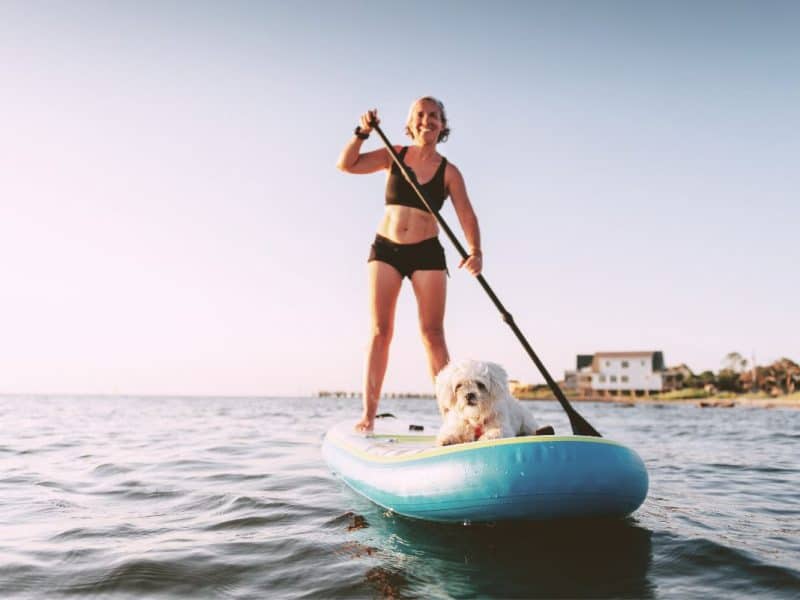on-sup.com Stand Up Paddling
Stand Up Paddling with Dog
Experiencing stand up paddling together with your dog offers you and your dog unforgettable moments on the water. Whether you're a beginner or an experienced paddler, this is fun and relaxation for both surfer and dog.
However, it takes some preparation and training to ensure that both you and your dog can enjoy SUP boarding. Here are some of our tried and tested tips to learn stand up paddling with your dog safely:
Get to know the SUP board
Let your dog explore the paddleboard on land first so that he can slowly get used to it. Let him get on and off the board to build up confidence. However, with inflatable SUP boards, watch out for sharp dog claws, possibly place a blanket or towel on the board to protect the surface at first and remove the fin beforehand so that the SUP board lies flat.
Find a quiet spot on the beach without the distraction of other dogs or running children.
Getting used to the water
Make sure your dog can swim and feels comfortable in the water before you practise SUP boarding with him. There are also life jackets for dogs, but you also need to get your dog used to life jackets first.
Gradually introduce your dog to the water by gradually taking him into shallow water and then slowly going deeper. A sandy entrance without stones is very helpful at the beginning in case he does slip.

Board stability
Start with a wide and stable board to increase stability. An inflatable board can also be more comfortable for your dog than a hard board.
Paddleboard position
Practise getting on and off the board in shallow water to teach your dog how to move on it. Stay close to him and keep him safe.
Reward your dog with treats and positive reinforcements when he behaves well on the paddleboard or simply with an encouraging voice, not everyone likes to be fed treats all the time.
Slow approach
Start with short outings and gradually increase the duration to give your dog time to get used to the activity. Don't overdo it on the first day, no matter how well it works. It is also a completely new experience for your dog and he has a lot of new impressions to process.
Safe paddling
Make sure that your dog is sitting in a stable position on the SUP board to avoid tipping over. Always hold the paddle in such a way that it does not endanger your dog and choose a calm day without waves, wind or currents. Beaches that are heavily frequented by children are also not advisable at the beginning if you are not yet able to judge how your dog will react to so many new things.
React correctly
Remember, when the sun is burning in summer, the sun reflects off the water many times over. Make sure that your dog doesn't sit on the SUP board for too long in the burning sun. Longer tours after familiarisation should be started early in the morning, at least not in the bright midday sun.
If you do fall, stay calm and memorise your own sequence in such a situation. Don't get tangled up in the leach, let the paddle float and calmly reach for your dog first.
If you can't get back on the board in deep water, simply pull the board behind you with the leash on your foot and swim slowly back to land with your dog under your arm or next to you. It is very important that there is no agitation, otherwise your dog will get scared and won't want to get back on the board.
Remember that not all dogs like stand up paddling. Pay attention to your dog's signals and stop if they show signs of stress or discomfort. With patience and positive experiences, you can make stand up paddling a great sport for you and your dog.
When your dog comes out of the water, he will certainly be thirsty, especially in salt water. Remember to take enough water with you on secluded beaches and, if necessary, a sunshade or mini parasol for your dog if there are no shady areas on the beach.

